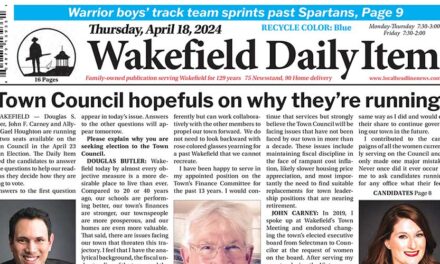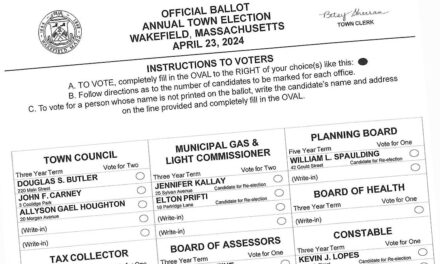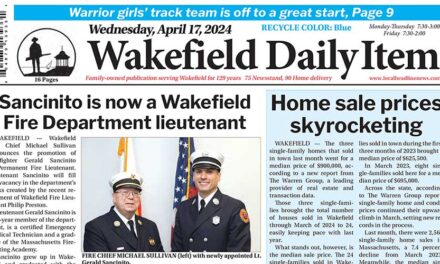Published on September 28, 2020 edition.
By MARK SARDELLA
WAKEFIELD — An independent engineering firm has cleared the way for local schools to reopen tomorrow for limited classroom instruction. The firm concluded that any deficiencies in the air quality or ventilation systems in the schools can be adequately addressed using short-term measures and should not affect plans to move to the hybrid instructional model tomorrow.
On Tuesday, local schools plan to enter Phase 3 of their reopening plan, which involves a blend of in-person classroom instruction and remote learning at all levels. The models differ by grade level and school, but all feature some amount of in-school, classroom instruction along with remote learning.
BALA Consulting Engineers was brought in to assess the air quality and ventilation systems as the schools prepare to move to Phase 3
BALA is a structural and mechanical engineering firm with offices in Boston, New York, Baltimore, Philadelphia and Washington, D.C. that specializes in heating, ventilation and air-conditioning systems. The firm has produced a number of white papers on COVID-19, including “COVID-19 and the Impacts to K-12 Schools,” issued on June 16, 2020.
The firm’s engineers have been assessing local school buildings over the last several weeks. BALA engineers Ed Dolan and Piotr Sosniak appeared at a special School Committee meeting last Friday afternoon to go over their report.
Dolan said that their findings regarding the air quality and ventilation were similar across schools in the district and were typical of school buildings in at least 10 other school districts that BALA has been working with.
Dolan began with the Woodville School. He said that classrooms were served by unit ventilators which consist of console units and a grill on the outside to draw in air. Larger spaces are served by rooftop air-handling units, he said.
BALA’s classroom measurements determined that the system was turning the air over between 1.5 and two times per hour. While this may be adequate for normal circumstances, Dolan said that the Harvard School of Public Health has recommended an air exchange rate of 4-5 times per hour in the COVID era. He said that this conclusion was based on the amount of air needed to dilute contaminants down to 1 percent.
He said that the easiest way to accomplish this is simply to open windows, which would result in well over five air changes per hour. Once cold weather precludes opening windows, Dolan said, portable air purifiers can provide the additional air changes.
School Facilities Manager Bob Schiaroli has previously reported that at least 100 portable air purifiers have been purchased by the School Department for this purpose.
Dolan and Sosniak said that similar air exchange rates were found at other schools in the district, such as the Dolbeare and the Walton. They noted that they did observe issues with stuck dampers in some of the schools, which can quickly and easily be corrected to increase the air flow rate significantly.
They also recommended running the ventilation systems in all schools for a short period of time before school opens each day and keeping them running for a time after the school day ends to maximize performance.
The Greenwood School, the oldest school in the district, does not have a mechanical ventilation system. BALA noted that all spaces have operable windows and recommended using windows for air exchange when possible. The school is also getting air purifiers for the classrooms.
Sosniak said that the newest school in the district, the Galvin Middle School, had the fewest issues. Air exchange rates at the Galvin were found to be in the range of 2-5 times per hour.
BALA recommended that the dampers at the high school be looked at in order to increase the flow of outdoor air. They recommended using higher grade filters where possible in the HVAC system. They also found some exhaust fans not running, which they identified as a simple fix.
Several School Committee members pressed Dolan and Sosniak, asking if BALA found any concerns that could not be overcome in the short-term before Tuesday.
Dolan said that the combination of open windows and air purifiers to pull in outside air would get school spaces to the point where they need to be. In the meantime, other fixes can be implemented, such as repairing dampers and installing higher rated air filters where possible.
Lyons said that he had spoken to Town Administrator Stephen P. Maio and DPW Director Joseph Conway and both had committed the manpower needed to make the schools safe for opening under the hybrid model starting Tuesday.
Dolan assured the School Committee that no glaring problems were found that could not be rectified by supplementing outside air through windows or air purifiers.
Lyons said that he planned to convene a Zoom meeting this morning with School Buildings Manager Bob Schiaroli, the DPW and BALA engineers Dolan and Sosniak to map out a plan to make sure everything would be ready to go on Tuesday.
Lyons expressed confidence the schools would be ready. Barring any unforeseen changes, Lyons said, “The information that’s been provided indicates that the spaces are safe for return.
Another Special School Committee meeting is scheduled for Tuesday at 7:30 p.m. At that time, Lyons promised to provide more updates.




